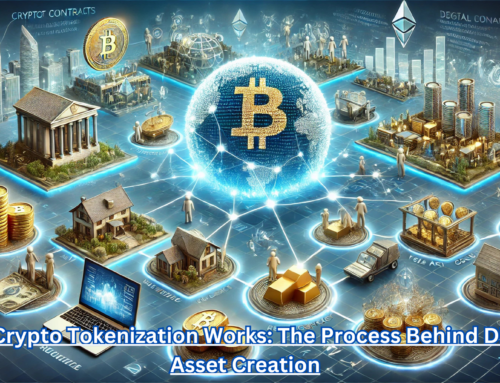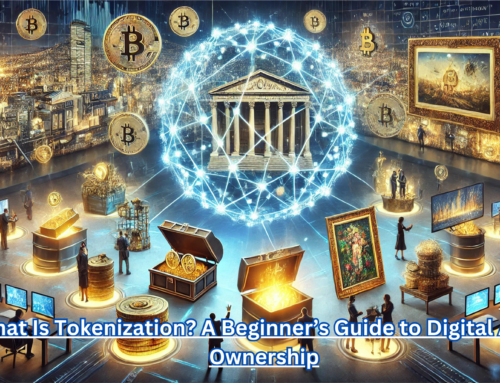In 2008, the world watched in despair as the financial system unraveled. Banks deemed “too big to fail” were crumbling, government bailouts were draining public trust, and ordinary citizens were left to pick up the pieces of an economic disaster they did not create. For many, it felt as if the very foundation of the global economy was broken beyond repair.
But amidst this chaos, something extraordinary happened. An anonymous figure—or perhaps a group—known only as Satoshi Nakamoto quietly published a nine-page whitepaper introducing a revolutionary idea: Bitcoin. This decentralized digital currency was not just a new form of money; it was a direct response to the failures of traditional finance. It promised transparency, scarcity, and most importantly, freedom.
This is the story of Bitcoin—a rebellion born out of crisis and a movement that continues to redefine how we think about money and trust.
The Financial Collapse That Changed Everything
To understand Bitcoin’s origins, we must return to 2008, a year of financial reckoning. Lehman Brothers, a Wall Street giant, collapsed under the weight of its own risky bets, triggering a domino effect across the global economy. Millions lost their jobs, homes, and savings as the crisis deepened. Governments stepped in with massive bailouts, printing trillions of dollars to save banks and corporations, while everyday people bore the brunt of inflation and eroding purchasing power.
The crisis revealed a hard truth: the traditional financial system was built on fragile foundations—opaque, centralized, and prone to corruption. For many, the question became clear: why should so much power over our money rest in the hands of so few?
In this climate of disillusionment, Bitcoin emerged, offering a radical alternative—a financial system that didn’t rely on banks, governments, or middlemen. It was a system built for the people, by the people.
The Mystery of Satoshi Nakamoto
Bitcoin’s creator, Satoshi Nakamoto, is an enigma. On October 31, 2008, Nakamoto released the Bitcoin whitepaper, laying out the concept of a peer-to-peer electronic cash system. Just a few months later, on January 3, 2009, the first-ever Bitcoin block—the Genesis Block—was mined. Embedded in this block was a message that spoke volumes: “The Times 03/Jan/2009 Chancellor on brink of second bailout for banks.”
This wasn’t just a timestamp; it was a declaration. Bitcoin was born as a response to the failures of traditional finance, a digital lifeboat for those seeking refuge from a sinking system.
But who is Satoshi Nakamoto? Theories abound:
- Some believe Nakamoto is a lone genius, a cryptography savant who wanted to create a fairer financial system.
- Others speculate that it was a team of developers, pooling their expertise in mathematics, economics, and computer science.
- Then there’s the idea that Nakamoto’s anonymity was intentional—a way to keep Bitcoin decentralized and free from the influence of any single figure.
In 2010, Nakamoto vanished, handing over Bitcoin’s development to others. To this day, their identity remains one of the greatest mysteries of the modern era. But perhaps that’s exactly how it should be. Bitcoin was never about its creator—it was, and still is, about the vision.
A Movement, Not Just a Currency
Bitcoin is far more than a form of digital money; it’s a philosophy. It challenges the very idea of centralized power, offering a system where no single entity controls the rules. It operates on a blockchain—a decentralized ledger that ensures every transaction is transparent, immutable, and secure.
But beyond the technology lies a deeper promise: Bitcoin represents freedom. Freedom from inflation, where money loses value overnight. Freedom from financial gatekeepers, who decide who can access wealth and who can’t. Freedom to transact, save, and build without interference.
For people in places where financial systems are failing—be it due to hyperinflation, corruption, or exclusion—Bitcoin offers hope. It’s not just a tool for investment; it’s a lifeline.
Opportunities for a Decentralized Future
Bitcoin’s potential is immense, but so are its challenges. To embrace this revolution, one must start with curiosity and a willingness to learn. The journey begins not with large investments or technical expertise, but with understanding the “why” behind Bitcoin’s creation.
Take the story of Maria, a single mother in Venezuela. As her country’s currency spiraled into hyperinflation, her savings became worthless almost overnight. But through Bitcoin, she found a way to preserve her wealth. She used a small amount of Bitcoin to buy groceries, pay for medicine, and even start a small business. For Maria, Bitcoin wasn’t just an investment—it was survival.
For others, like tech-savvy entrepreneurs in Silicon Valley, Bitcoin represents an opportunity to build something new. Startups are creating solutions to make Bitcoin faster, more scalable, and more accessible. Innovations like the Lightning Network are making transactions cheaper and more efficient, paving the way for Bitcoin to become a true medium of exchange, not just a store of value.
The opportunities are endless, whether it’s investing, mining, or participating in the broader cryptocurrency ecosystem. But at its core, Bitcoin remains what it has always been: a beacon of hope for those who dare to imagine a world without financial barriers.
The Road Ahead
Bitcoin’s journey is far from over. It faces challenges—its environmental impact, scalability issues, and regulatory scrutiny are just a few. But these obstacles are not insurmountable. In fact, they’re a testament to Bitcoin’s growing significance. After all, revolutions are never easy.
As governments explore central bank digital currencies (CBDCs) and institutions dive deeper into crypto, Bitcoin stands firm as a symbol of independence. It’s not just a technological innovation; it’s a statement—a reminder that trust, transparency, and fairness can exist in a world often dominated by greed and control.
A Call to Action
Bitcoin was born out of crisis, but it thrives because of the people who believe in its vision. Whether you’re an investor, an entrepreneur, or someone simply curious about the future of money, Bitcoin invites you to be part of something bigger.
Start small—read its story, explore its potential, and engage with its community. Like any revolution, it’s not about perfection; it’s about progress. Bitcoin doesn’t promise an easy path, but it offers a transformative one.
The financial system may have failed in 2008, but out of its ashes rose a new possibility. The question isn’t whether Bitcoin will shape the future—it already is. The real question is: will you be part of the revolution?




